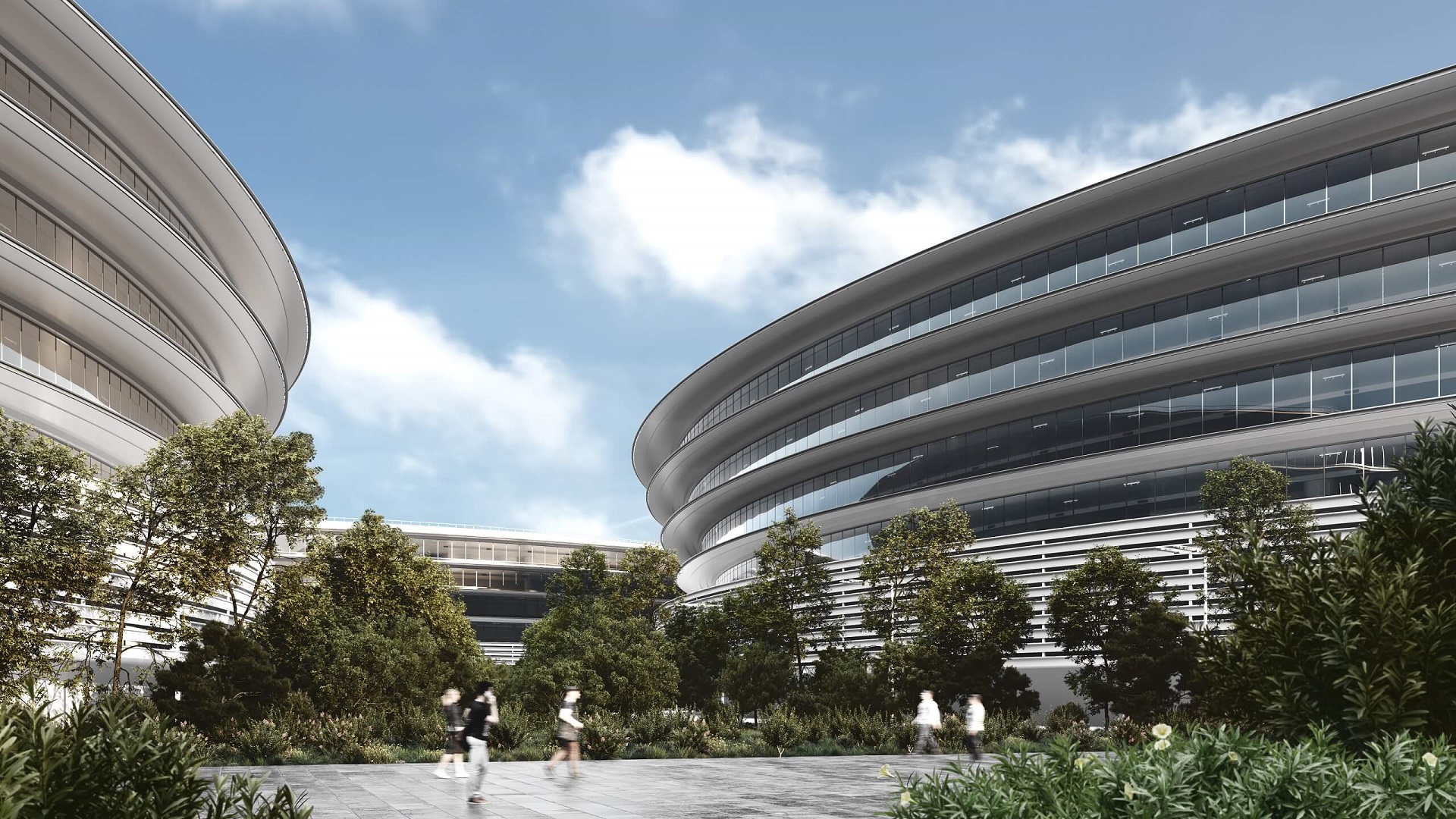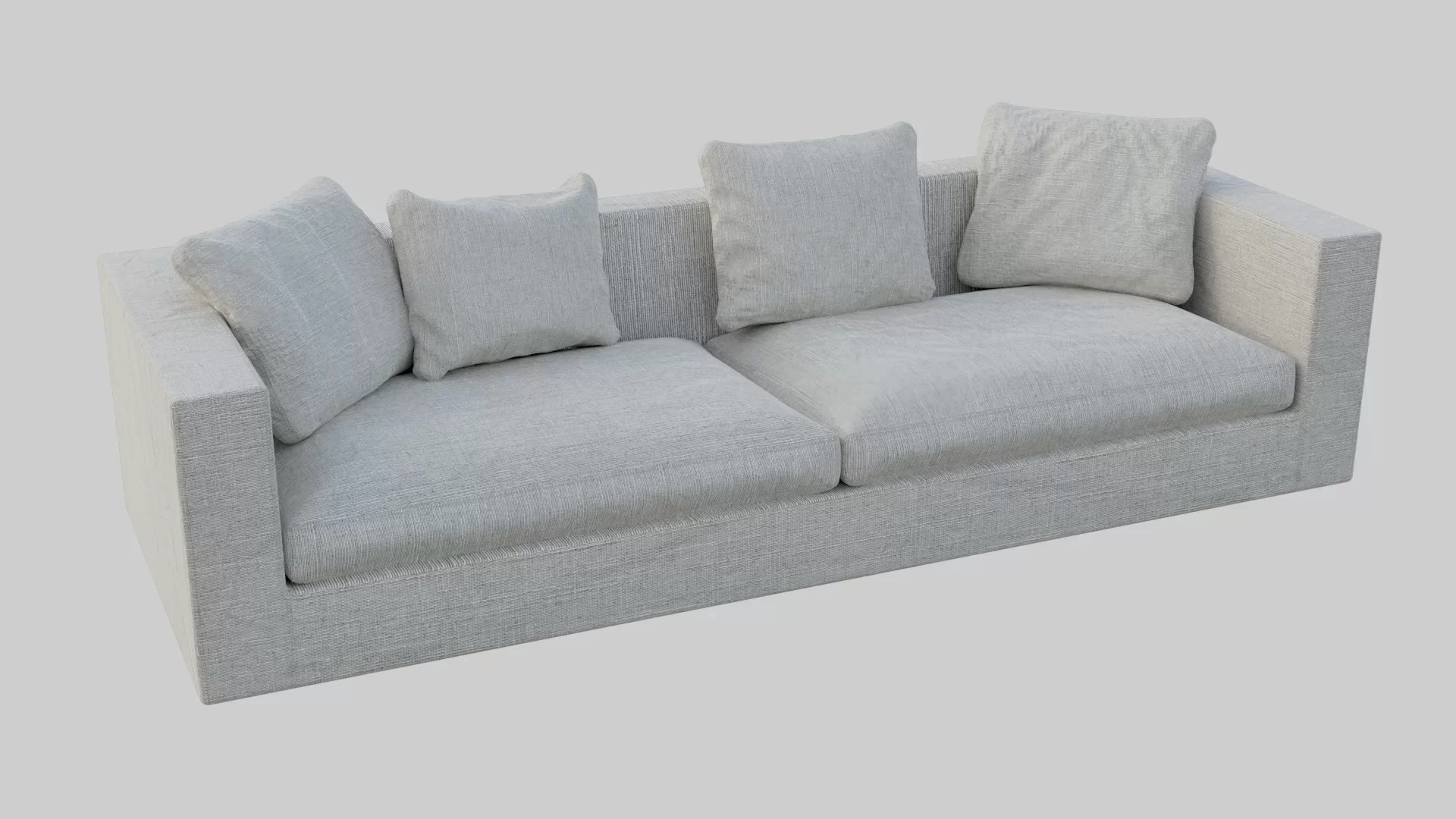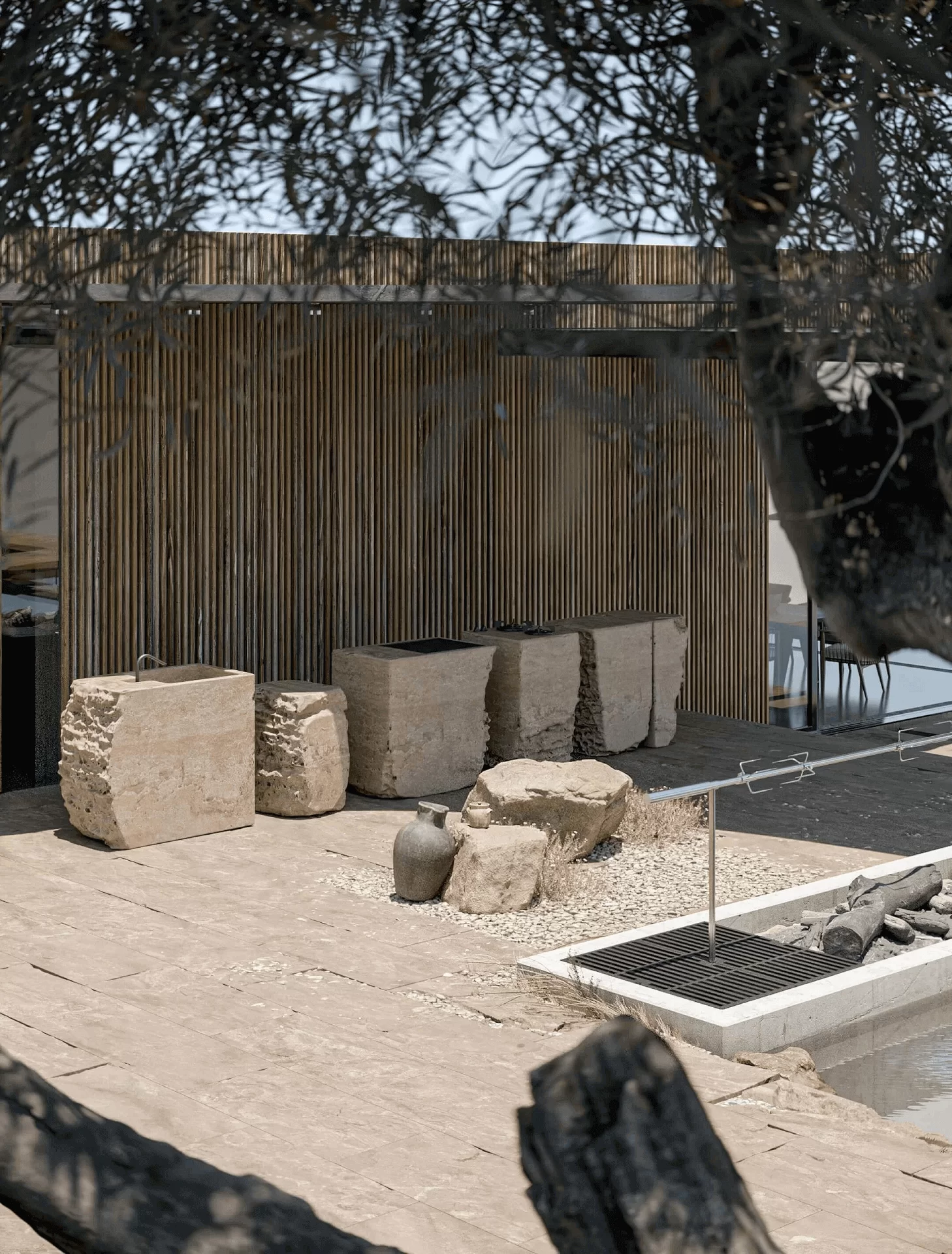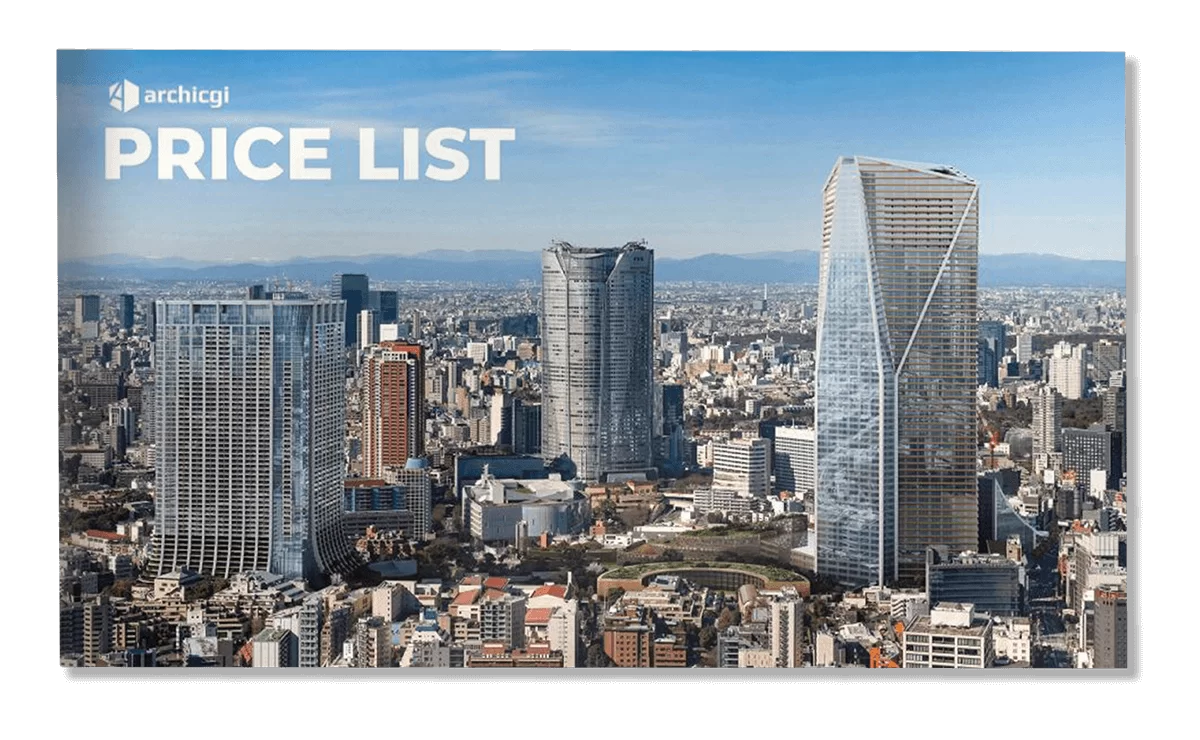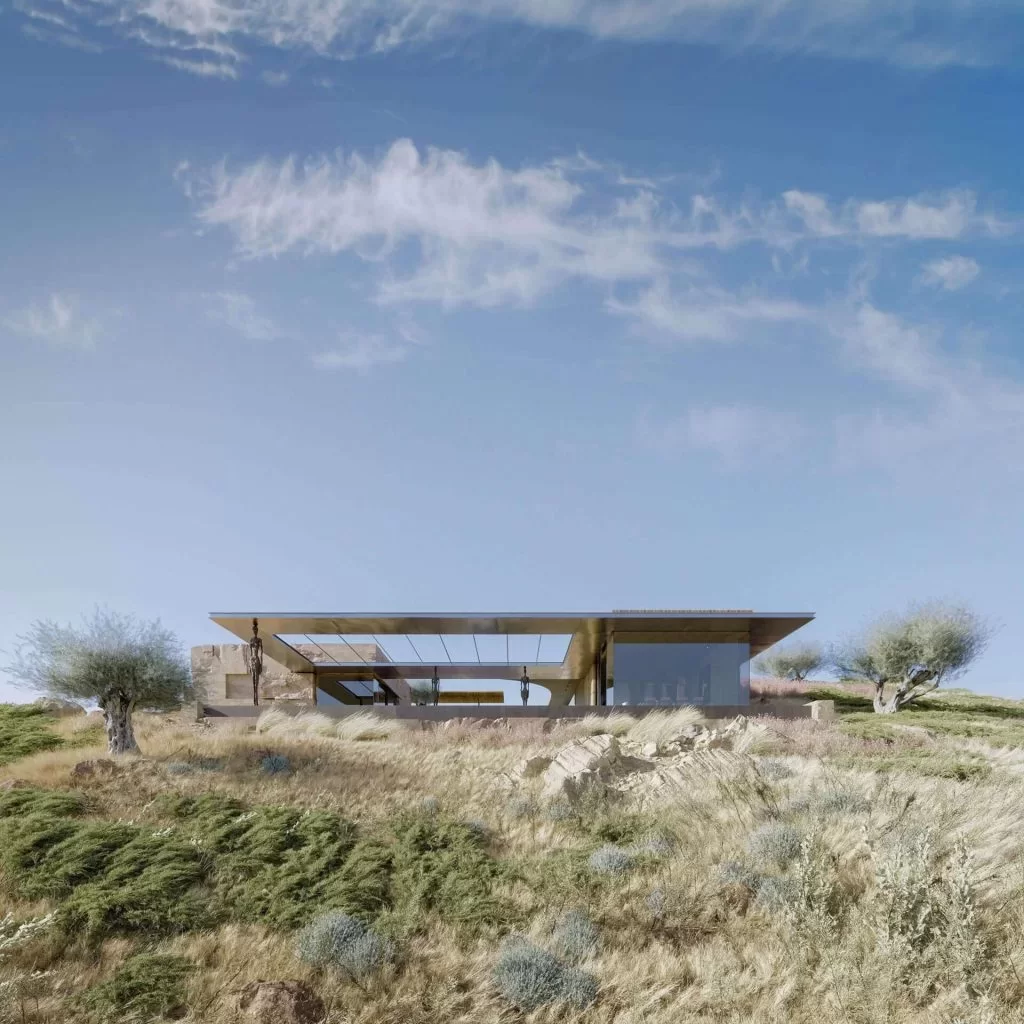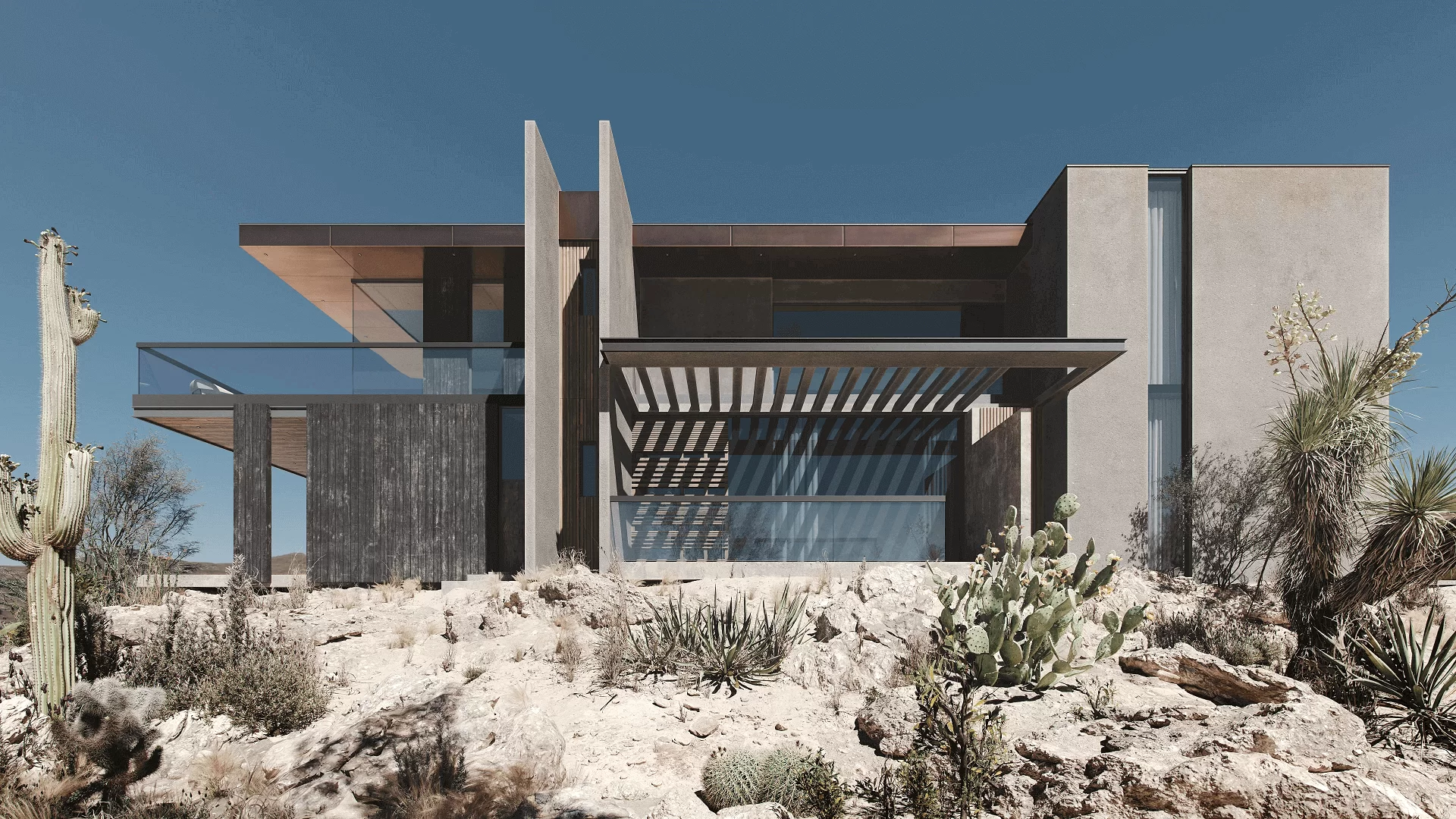In this paragraph, we will tell you about a variety of digital tools used in archviz to create, manipulate, and render 3D objects and scenes. This software allows CG artists to build models, apply textures and lighting, and generate realistic images and animations.
Autodesk 3ds Max is a universal tool for 3D modeling, visualization, and animation. It is used not only in architecture but also in industrial design, gaming, and the film industry. The program allows for making visualizations of any complexity and level of photorealism. It provides extensive opportunities for 3D modeling, including creating simple and complex geometric shapes, developing details, creating textures, and UV mapping.
There are countless plugins and libraries of models and materials available for 3ds Max, which allow for expanding its functionality. 3ds Max can be integrated with other Autodesk software, such as AutoCAD and Revit. It supports many different file formats, including 3DS, FBX, OBJ, and DWG.
Unreal Engine is a popular program for creating real-time 3D graphics. It boasts its own rendering engine as well as numerous plugins and libraries. The software is mostly used for video games and interactive apps. However, it also has application in architectural visualization, where its strength lies in making animations and creating multiple static views much easier.
UE’s editor features an intuitive interface that makes it easy to get started with the program. The software offers extensive capabilities for working with audio files, videos, and images, allowing for the creation of complex multimedia projects with high-quality sound and visual effects. Unreal Engine supports multiple platforms, including Windows, Mac, Linux, PlayStation, Xbox, and others.
A significant advantage of this software is that it can be used for free. It also has an active developer community that provides quick and efficient help to users.
This open-source program offers a complete set of tools for creating 3D models, animation, compositing, and rendering. Blender is free to use, which explains why it has numerous fans and a large user community with effective technical support. There is a wide selection of plugins and libraries available. The software has an intuitive interface and supports many file formats, including OBJ, FBX, STL, and others.
This software allows one to create architectural 3D animations with relatively little effort and in short time frames. It can transform static renders into interactive presentations that allow one to move the camera and change the viewpoint in a scene. Lumion has an intuitive interface, which makes it easy to use even for beginner 3D artists. Another advantage of the program is an extensive library of various materials, effects, and models.
Lumion allows importing models from different software, such as SketchUp, 3ds Max, Revit, and others. Also, it supports VR. The file formats suitable for working in Lumion include FBX, OBJ, MAX, 3DS, DXF, DAE, and SKP.
This program is widely used for 3D modeling of different complexity. It is very popular in videogame, film, design, and other industries. In architectural visualization, Zbrush comes in handy when it’s necessary to model complex, unique, and organic-looking shapes.
The main advantage of the software is its sculpting feature. Sculpting is a method of 3D modeling that allows for the creation of models with an exceptional level of detail and realism.
Zbrush also provides retopology tools that can help one change a model’s geometry. For instance, these tools make it possible to create models with a lower polygon count as well as to change the size and shape of a model without losing any details. One more benefit of Zbrush is its ability to easily integrate with other programs.
This software is used for modeling clothing and textiles, which is an important part of interior 3D rendering. Marvelous Designer’s intuitive interface and simple tools allow users to quickly create and edit models.
The program has a large library of textures and a built-in simulator, which helps to imitate the physical properties of real clothes. For instance, it can realistically simulate folds and other features, ensuring that clothes and other soft objects look maximally realistic in CGI. The program supports different 3D file formats, such as OBJ, FBX, and others. That allows one to import and export models to other software for further processing.
Want to learn how much your project costs? See how we evaluate 3D rendering projects
See our pricing
SideFX Houdini is used for creating visual effects, animations, simulations, and 3D models in a variety of industries, including architecture and design. Its node-based structure allows for maximum flexibility and precision when adjusting objects, interactions, or effects. Using procedural modeling, one can create complex parametric models that can be easily modified in the future. The program offers broad capabilities for creating various types of simulations, including fluids, fire, smoke, and others.
SideFX Houdini integrates well with other software products, including Autodesk Maya and Cinema 4D. With Houdini, users can create tools for making interactive interfaces to control objects and effects in real time for other programs such as 3ds Max and Unreal Engine.
In architectural CGI, the program provides effective solutions for photorealistic 3D rendering.


